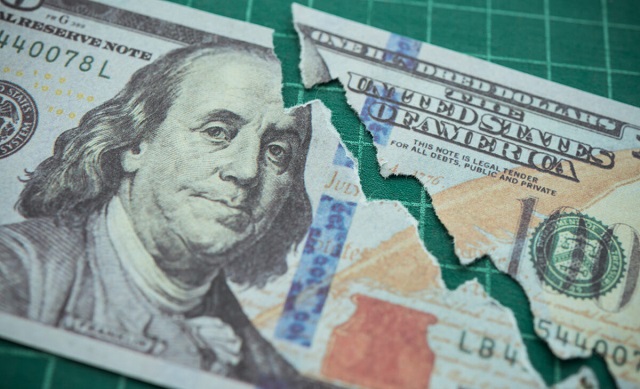
Kampala, Uganda | THE INDEPENDENT | Reducing reliance on the US dollar necessitates satisfying financing requirements in local currency and enhancing local financial institutions
Whenever I meet clients and investors, the one discussion I always end up having, regardless of market conditions, is on currency markets.
There are often strong views expressed about why domestic policy direction or the price of key tradable goods or services is leading to one’s home currency strengthening or weakening. The discussion we don’t have often enough, though, is the over-sized impact the movements of the US Dollar can cause upon Emerging Market countries and is there any way to reduce this over time.
While policy and trade are usually the main drivers of major currencies, I often point out that currencies, and their drivers, are relative, not absolute. Therefore, any discussion of policy or external balances of an economy matters, but primarily in relation to the policy or external balances of the economy’s major trade partners.
However, when it’s the US Dollar itself that’s on the move, the impact is magnified due to the significant proportion of global fuel and food that is priced in US Dollars.
This was highlighted in 2022, with the US Dollar appreciating significantly against most global currencies. The US Federal Reserve hiked interest rates at a record pace, tackling US inflation that was spiking due to global fuel and food price rises post the Russian invasion of Ukraine.
This “double-whammy” of higher US interest rates and racing global inflation caused a massive headache for central banks everywhere. For most, the unpalatable choices were to either hike interest rates even faster than the US to prop up their currency, or to let the currency depreciate making the already higher priced food and fuel, even more expensive to import.
Many countries instituted fuel or food subsidies to help reduce the impact on their citizens, however this typically increased budget deficits, driving debt levels higher at a point when funding that debt had suddenly become much more expensive.
As if the situation wasn’t difficult enough, most African countries still rely on U.S. dollar-denominated debt to help finance their economies. United Nations trade body UNCTAD estimates that Africa’s external debt stock rapidly grew to $466 billion by mid-2022 through bilateral borrowing, syndicated loans, and bonds. As local currencies devalue, dollar debt repayments become more expensive, pushing more countries towards a future potential debt crisis.
Across Africa, this deluge of geopolitical and macroeconomic shocks, has weighed heavily on many currencies. For net importers of fuel and food, it has led to both the steepest currency depreciations as well as the highest inflation levels. This macro back-drop, combined with governmental policy and central bank missteps, has pushed some currencies to historic lows.
Countries that fared better typically have one of two things in common. They are either net fuel exporters, or they applied quasi or actual capital controls to limit the depreciation of their currency.
But whilst restricting capital outflows might provide the illusion of control to a hard-pressed Central Bank, it has two majorly negative implications for the real economy.
One, the ability for importers to access US Dollars becomes very difficult. This leads to either a parallel FX market forming, or access to essential imported goods becomes problematical, or both. Hardly any-one had heard about Sri Lanka’s financial woes until they ran out of dollars to buy fuel…
Two, existing investors who want to extract dividends etc., or potential future investors, are deterred from investing in that country due to fear of being unable to repatriate capital. This impacts the long-term growth potential of an economy, with insufficient investment capital available to be put to work.
Some may argue that the stronger dollar should be viewed as an opportunity for Africa as it results in inward investments into the continent being cheaper for US investors, and in dollar-based African exports being comparatively more competitive. However, the rush to emerging markets will not materialise if foreign investors remain nervous about continued local currency depreciation, and its impact on local currency returns once converted back into dollars.
Luckily for most of Africa, the US Dollar peaked last October and has since dropped in value by over 10 per cent against most major currencies. This happened even though the US Federal reserve has continued to hike rates. This has given some much needed relief to those countries hardest hit, but leads me to ask the question – is it possible to reduce the impact of future gyrations of the US Dollar on their economies?
One obvious option is to meet much more of their financing needs in local currency. Aside from South Africa and Nigeria, governments have not yet done enough to develop capital markets that would have allowed them to raise more money in their own currencies. Doing so, requires both investment in the capital market infrastructure itself, as well as the presence of strong local financial institutions, so that they can place less reliance on external investors.
Kenya has an ambitious programme to introduce a repo market in 2023, backed by a local Central Securities Depository. This should improve liquidity in the underlying bonds, cheapening the level it can issue local currency debt. This initiative should be applauded, and I would like to see other African countries following suit.
But countries also need strong local financial players to help absorb the debt issued. One area for policymakers to consider, is improving (or creating) their countries Pension Fund and Insurance institutions. Africa has some of the lowest pension fund assets to GDP ratios across the globe, similarly for its assets held by Insurance companies. Policies that lead to greater in-flows into such long-term investors, creates ready buyers of local government debt to be held against their long-term liabilities.
But not every country has the resources, or the scale to achieve this single-handedly – so could a regional or Pan-Africa approach be more effective? The West African Economic Monetary Union (WAEMU) was established to promote economic integration amongst eight West Africa countries.
The member states share a common currency, the CFA Franc, administered by a single central bank and live within a set of fiscal constraints akin to those for the Euro. Being part of the region allows each country to manage their own local debt issuance in CFA, whilst giving them a wider cross-regional pool of African investors to sell into.
Improving local debt financing capabilities to reduce reliance on US dollar external debt, will clearly be helpful in managing future US Dollar fluctuations. However, it doesn’t resolve the issues caused by most major fuel and food goods being priced globally in US Dollars. So, how can African countries better protect themselves from a rampant dollar in the future?
It’s very unlikely that we will see a material shift away from commodities being priced in dollars. Which leaves several potential options for African countries to consider implementing.
For those blessed with oil and gas reserves, increasing domestic oil and gas production is one obvious step. But, to maximise the amount of USD earned on sales, increasing the level of refined product is necessary.
However, the need to refine more products onshore in Africa is not just about oil and gas. Selling unrefined commodities like palm oil, cocoa etc means that the amount of value captured by the producer is only a small percentage of the final value of the product (~10-15%). In general, the more Africa can do to move itself up the production value chain across both commodities and manufacturing in general, the better.
But not every country has oil or gas reserves or can afford this level of investment. A regional co-operative model could be developed to share the investment risk and future benefits more broadly across the continent. Africa has a very young population in need of jobs. Playing a greater role in the production process, solves for both improving USD inflows and for providing higher quantity and quality of employment opportunities.
Improving food security also needs to be a priority for those countries that have historically relied heavily upon imported grain, rice etc. Egypt was particularly exposed when Russia invaded Ukraine, being required to pay massively higher prices in US dollars, at the point when the Egyptian Pound was depreciating rapidly.
Increasing the productivity of African arable land – perhaps by producing fertiliser on the continent rather than importing it. Improving the distribution infrastructure, so that perishable goods survive long enough to reach consumers. Switching to different crops that can be grown and consumed in Africa. All of these will help improve food security and alleviate pressure to source dollars.
So, in summary, Africa is over-exposed to the US Dollar. Its constituent countries need to either independently work to mitigate that risk or work collectively do so. Bouts of dollar strength are cyclical, so there is hopefully time to action initiatives before the next one arrives.
Hope is not a strategy. But I do hope that the elected officials in Africa, have recognised the damage wrought over the last 12 months and are working on their strategy.
****
Source: African.business
 The Independent Uganda: You get the Truth we Pay the Price
The Independent Uganda: You get the Truth we Pay the Price



